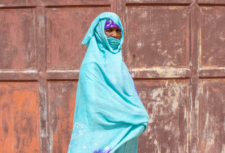Disclaimer: This article is more than 14 years old, and may not include the most up-to-date information or statistics. Please verify information with more recent sources as needed, and if you have any questions contact our Press Office.
11 September 2009
People are being forced against their will to produce everything from Christmas decorations in China to pornography in Russia and shrimp in Thailand, according to a major new report by the US Department ofLabor.
The report, The Department of Labor’s List of Goods produced by Child Labor or Forced Labor published Thursday 10 September, lists 50 goods produced with forced labour in 28 countries, from Argentina to Uzbekistan. The report also analyses goods produced with child labour across the world.
“This is a much needed wake-up call and the sheer number of products listed in the report goes some way to demonstrating the scale of the problem of forced labour,” said Joanna Ewart-James, Anti-Slavery International’s Supply Chain Co-ordinator.
Burma is linked to the highest number of goods produced with forced labour, including precious jewels, rice, rubber, shrimp and soy beans.
India is the country most blighted by child labour, with many products including bricks, carpets and textiles doubly tarnished by evidence of forced labour. India has never signed up to major international conventions banning under age work or the worst forms of child labour.
The most common products madewith forced and child labour are cotton, coffee, cocoa, rice, sugar cane and tobacco in agriculture, bricks, carpets and garments in manufacturing and coal and gold in mining.
“Most consumers in the world market would not choose to purchase goods known to be produced by exploited children or forced labourers – at any price,” said US Secretary of Labor Hilda L. Solis.
The list will allow consumers and companies to translate their values to their day-to-day purchasing she said.
The report, the first of its kind produced by the Department of Labor, was commissioned by Congress in 2005 following the passing of the Trafficking Victims Protection Reauthorization Act.
Joanna Ewart-James said: “What is clear is that it is not enough for companies to rely upon national governments to address this grave violation of human rights. Companies must improve their ability to identify forced labour throughout their supply chains and ensure that management systems are in place aimed at its prevention and responsible eradication.”





